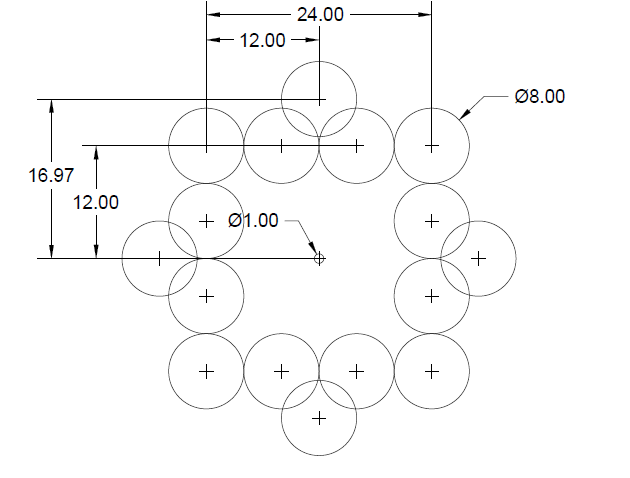MainPage:Nuclear:Summer2013:RadiationEffectsPlants
| ⇐ Back to Summer 2013 |
| ⇐ Back to the Main_Page |
Brief Description of Goals
General
This experiment will test the effect of different levels and types of radioactivity in radioisotopes implemented in soil of bean plants' growth and development. Additionally, after the form and dosage level that has the greatest impact on the plants is determined, it will be applied to the plant at different stages of development (i.e. germination, 1 week after germination, 2 weeks after germination, etc). This is significant because these radioisotopes are utilized in everyday life including the use of Am-241 in smoke detectors and medical diagnostics; Cs-137 in cancer treatment; and Sr-90 in bone cancer treatment and eye treatment.
Cosmic Ray Detector
The purpose of this detector is to establish the best scintillator size and number to determine an uncertainty of the fluctuation of cosmic radiation which contributes to the uncertainty of the overall radiation effecting the plants being tested. It also provides a method to check the dosage of the varying types of radiation from the following radioisotopes.
This website provides in-depth directions on how to construct a cosmic ray detector, and it's instructions provide us with a backbone from which we can design our own detector [1]
We have also done calculations according to the procedure laid out by this procedure:
ΔΩ=(A/4πR^2)*4π
Where ΔΩ equals the subtended solid angle (in steradians) of the cone the two detectors make, A equals the area of the paddle, and R equals the distance from the center of one paddle to a corner of the other.
flux=ΔΩ*Fv*A
Where Fv equals the published value for flux at sea level, which equals 0.66/(cm squared*min*steradians)
Using this method, we calculated the expected flux using the setup in the lab already [1.50/(cm squared*min*steradians)] and using larger sized paddles (14cmx10cmx1xcm) which gave us the expected flux of 9.19/(cm squared*min*steradians). If this process is to be trusted, making the paddles this size would result in an increase in flux of 613%, which makes the construction of new scintillators worthwhile.
Preliminary Test Results
Running the muon counter for a cycle of 24 hours (1440 minutes) a total of 1948 counts were recorded. At different times during Wednesday, July 7th, the count number was recorded in order to monitor for any jumps in the data. Fig. 1, Fig. 2, and Fig. 3 are graphs depicting the data collection.
| Source | Initial Activity | Input Date | Current Activity | Radioactive Particle Distribution |
|---|---|---|---|---|
| Bi-210 | 12 μCi | 11/3/1972 | 0 μCi | β- and a little alpha |
| Cs-137 | 2.3 μCi | 7/1/1988 | 1.3 μCi | Gamma and Beta |
| Cs-137 | 17.8 μCi | 10/15/1965 | 5.92 μCi | Gamma and Beta |
| Cs-137 | 3.86 μCi | 10/15/1965 | 1.28 μCi | Gamma and Beta |
| UO2 - Ore | (1.90 g) | Alpha | ||
| Am-241 | 0.1 μCi | 10/1965 | 0.09 μCi | Primarily emits alpha, but also gamma |
| Co-60 | unknown | Gamma and Beta | ||
| Ru-106 | 5.5 μCi | 2/2/1977 | 1.05E-10 μCi | Beta |
| Sr-90 | 0.1 μCi | 6/2003 | 0.1 μCi | Beta and infrequently gamma |
| Sr-90 | 0.1 μCi | 6/2003 | 0.1 μCi | Beta and infrequently gamma |
Experimental Setup
To begin our experiments, we will test the effect of different low dosages and types of radiation (alpha, beta, and gamma) on the bean plants. After completing this portion of the experiment, we will select the dose that stimulated plant growth the most, and use it to test different stages of plant life. To ensure that the plants germinate naturally, and without any radiation, we will germinate them on cotton pads. This should reduce an unexpected deaths prior to germination. The seeds that do germinate will be transferred to the soil in one of six cardboard boxes. A schematic of the desired setup is attached. Basically, there will be two levels of independent variable in each box, and eight repeated trials. For each type of radiation, there will be four levels of independent variable (total dose). To calculate the total dose, we are utilizing an online calculator to calculate the expected dose and subtracting the attenuation of the soil from that. Our dose levels will be within the tolerated level for that plant.
After this experiment has shown what dose we should use to test the effect of radiation on different stages of plant life. The following stages will be tested: germination, sapling (1 week), and nearing adult (2-3 weeks), and adult (over 3 weeks). We will expose the different plants for one week and compare them to a control with no radiation exposure.
